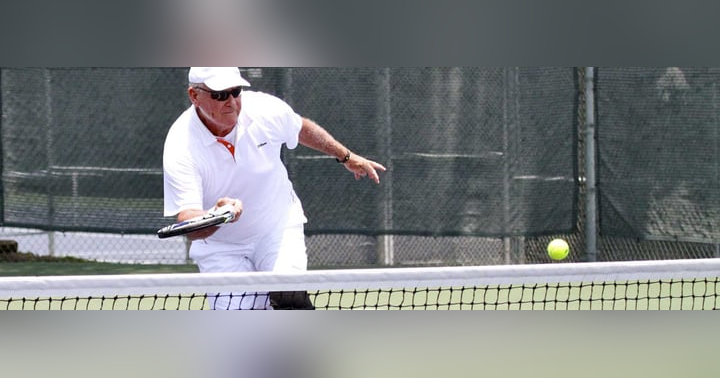Equipment for a beginner tennis player

One of the beauties of tennis as a sport is that it doesn’t require a great deal of equipment to get started. If you have or can borrow a racquet and a ball, you’re good to go. However, if you are planning to play regularly and have a desire to progress then you will need to invest in more equipment.
We’ve outlined the essential equipment every beginner tennis player should consider owning as they begin their tennis journey.
Tennis Racquet (or Racket)
There are a plethora of tennis racquet choices available from an increasing number of different brands that can suit your budget and intentions. A good place to start is the best tennis racquets for beginners as part of our Best 8 series. In general terms, as a complete beginner, consider a lightweight racquet with a bigger head size ton make returning the ball easier and are more forgiving when you don’t hit ‘sweet spot’.
It is critical to choose the right grip size. Often not enough time is spent considering this item. Choosing the wrong grip size will restrict your progress and worse, lead to injuries of the wrist, forearm, and specific injuries like tennis elbow.
The game of tennis is best played with a (really) relaxed grip. Contrary to what many think, across all strokes, players generate the highest levels of power, spin, and control through a fluid motion and impeccable timing to enable the racquet head to contact the ball with maximum racquet head speed. The same levels of power cannot be achieved by simply ‘muscling’ the ball. What is relaxed? Well if a score of 10 was gripping the racket as hard as possible and zero not gripping it at all, then the goal is to grip that racquet at a 2 or 3. The reality is most beginners and intermediates will likely be gripping the racquet too hard which gets exacerbated by the tension of competition. To avoid tension and prevent injury, we all can benefit from constant reminders to relax and that starts with selecting the right grip size.
| US Sizes | European Sizes | Sizes in Millimeters |
|---|---|---|
| 4 inches | 0 | 100-103 mm |
| 4 1/8 inches | 1 | 103-106 mm |
| 4 1/4 inches | 2 | 106-110 mm |
| 4 3/8 inches | 3 | 110-113 mm |
| 4 1/2 inches | 4 | 113-118 mm |
| 4 5/8 inches | 5 | 118-120 mm |
| 4 3/4 inches | 6 | 120-123 mm |
The grip sizes vary from 4 inches (or size 0, the smallest) to 4 ¾ inches (or size 5, the largest). And like many things around size, the utilization of grip sizes is a bell curve, with the vast majority of people needing a size 2, 3 or 4.
While some people recommend measuring the length of your hand, truthfully, because the handles of racquets and butt cap shapes do vary more than ever today, it is better to use another simple approach. If you buy from a reputable pro shop, they can guide you too.
Now hold the racquet in your non-dominant hand, place your dominant hand behind the grip and gently wrap it around so that your fingers and thumb (almost) meet at the front. Now, using it as your guide, place your little finger of your non-dominant between the gap between your fingers and your thumb. If you can’t get the little finger in the gap, the grip is too small. If there is a massive gap on either side of the little finger, then come down a size or two.
Know that (within reason) it is better to have a grip slightly too small than too big - not least because you are likely to be using an overgrip on top of the synthetic or leather grip (especially in hot and humid climates). Many professional players use a grip size one size smaller to enable then to apply more spin. Getting a grip size too big will waste strength trying to grip it and lead to tension.
Remember, to get a true understanding of the best beginner racquets available, be sure to check out our detailed guide. And if budget is really tight, then look for last year's models, ex-demo racquets or buy a gently used racquet.
Tennis Balls
Put simply, tennis is not nearly as much fun without tennis balls! You’re going to want to make sure you have plenty of balls when practicing as it will start to get annoying very quickly if you have to collect your ball after every shot.
We will cover the different types of balls in more detail in another blog article. There are various tennis balls that are suited for specific surfaces, but you’re best off starting out with standard balls that are suitable for all courts from reputable manufacturers. Yes, you can buy non-branded balls cheaply from some big box stores, but honestly, it is not worth it. If you do start playing matches, you may find that these non-branded balls are not eligible for use by the USTA or similar.
Fresh, new balls from a can have more felt on the outside and are livelier, bouncing more. Older balls lose there felt and can become ‘dead’. Either keep them for practice, give them to a pet to play, or recycle them at a tennis center to avoid the millions of tennis balls ending up in landfills every year.
Tennis Strings
Essentially, there are five ways to string a racquet: natural gut, synthetic, polyester, multifilament or hybrid stringing. There are thousands of different tennis racquet strings available, all with slightly different properties and benefits.
Typically beginners racquets will come with adequate ‘synthetic’ (gut) strings for those who are still getting into the sport. However, as you begin to progress and compete at a higher level it’s important to work out what type of strings work best for your play style. Most people will progress from a synthetic to a multifilament string for solid power, comfort, and feel. The best way to determine what strings are best suited for you is to explore the options available, knowing that polyester strings are best left to higher intermediate and advanced players. We have previously covered the different types of tennis strings available in another blog post.
Overgrips
The perfect overgrip can help you feel connected to the racquet and the ball. An overgrip is typically a soft, thin layer that is wrapped around the handle of your racquet in order to improve grip and comfort. Overgrips can be dry or tacky or anywhere in between. Playing in a hot and humid environment with the synthetic grip only will make it much harder to keep hold of your racquet.
Once again we have covered the best dry overgrips available as part of our Best 8 series so be sure to check that post out for in-depth analysis.
Clothing
Selecting the right clothing will not only help to increase comfort, impact on your mindset and have a surprising impact on your performance. If you look good, you feel good and play better. It also gives you a chance to show off your individuality and make people remember you.
T-shirt
Often plain cotton shirts are a popular choice as they are comfortable. However, once you begin to sweat they will start to get heavy as they don’t dry fast meaning it will become over uncomfortable quickly. Most sports brands offer a range of quick-dry, performance materials and products that keep the sweat off your body to keep you dry and comfortable.
Shorts or skirt
Again you can play in any pair of shorts or skirts however, products that have been specifically designed for tennis are obviously the best choice. As is the case with a t-shirt, shorts come in fabrics that will help remove sweat from your body to keep you dry and comfortable. Additionally, many will have extra space for storing extra tennis balls.
Tennis Shoes
Tennis is a high tempo sport that requires a lot of movement and highly skilled footwork. You need to be able to move in all directions safely - east/west and north/south - baseline, forward to approach the net, and even backtrack to chase down an attempted lob. Without the appropriate footwear, this movement will be extremely difficult and you risk rolling an ankle. Running shoes are designed to enable you to move forwards, high-quality tennis shoes will enable you to move safely in all directions. If you have weak ankles, then consider buying ankle braces or, these days. There are some tennis shoes that have higher support built-in.
Tennis Bag
Having somewhere to store all of your equipment makes it much easier from competition to training. Tennis bags will allow you to carry multiple tennis racquets, as well as all of the other equipment you have. A backpack is often adequate for beginners with less equipment but if you are looking to play at a higher level and compete more regularly you will find a larger bag much more convenient for carrying extra equipment. If you are playing in hot climates, consider bags with built-in insulation to protect your strings.
Accessories
As a beginner, you don’t need to worry too much about carrying around loads of extra accessories. However, as you look to progress and play more you will realize that there are a few accessories that might make your tennis playing safely and more comfortable.
- Sunglasses. If you are playing a lot outside in the sun then it will be incredibly beneficial to invest in a pair of decent sunglasses to help your vision on bright days. Serving into the sun at noon can be challenging without sunglasses.
- Caps or visors. Caps or a visor are useful to protect your eyes from the glare of playing outside. Caps have the additional benefits of keeping your head cool and absorbing sweat.
- Sweatbands and headband. Sweatbands are a simple solution to help keep your hands dry. Headbands can stop the sweat from running into your eyes, something which can be extremely distracting during a match. They are especially useful for players with long hair to hold it in place.
- Towel. A towel is crucial if you are going to playing in the hot sun. Small microfiber towels are a popular choice as they are highly absorbent and will easily fit into your bag. Use them to keep your hands and body dry.
- Water and snacks. It’s vital when competing at any level in any sport to ensure that you are well hydrated. If you know you are going to playing in the hot sun or if you are playing over a long period of time at a competition, you will need plenty of water (with and without electrolytes) to remain healthy and a few snacks to help keep your energy levels up. If you are playing in extreme heat, then store your water and snacks in a cooler.
Summing up
While all of this equipment is not essential, as long as you have a racquet and a ball you can play, you will find that each item is beneficial in there own way. This is only a generic list of items that we feel all beginners who are looking to start playing tennis should invest, however, you will soon learn exactly what items you need to help improve your game.











